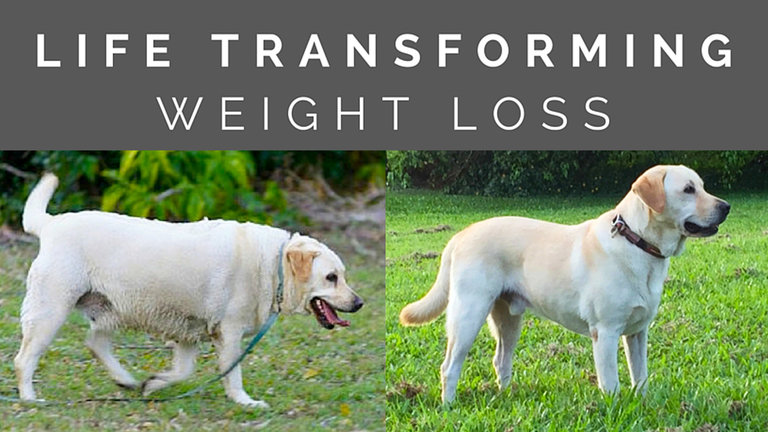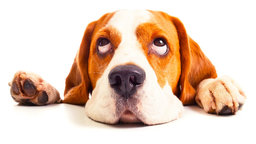Fat Dogs: Is Dog Exercise the Cure for Pudgy Pooches?
Dog Exercise: How much is suitable for fat dogs?
I love getting out and about with my previously “fat dog”, Maxo! Exploring the outdoors partnered by my exuberant, inquisitive canine companion always gets the day off to a great start.
The benefits for us both, in terms of physical and mental well-being are immeasurable. Not to mention the social, play, adventure and training opportunities this daily walk provides. You just can’t beat enjoying the outdoors with your beloved canine companion. After all, this is what owning a dog all is about!
However, despite my love of an active lifestyle, I pose this question…
Is dog exercise over rated in helping fat dogs lose weight?
And based upon years of veterinary observations my answer to this is a most definite YES!
No doubt you've heard many fat dog excuses (perhaps you even use them yourself)….
“I’ve been busy lately and just haven’t had time to exercise Fido”.
“Yes, I know Buster is a little chubby but I just need to get him out for some more walks!”
“Rusty is a fat dog because he is lazy and not interested in exercise”
Pet industry professionals as well as dog owners, continue to blame canine weight gain on inadequate dog exercise levels. However lack of exercise is not the main culprit for dog weight gain..
Excessive food intake is!
Dog SlimTip!
Obese and fat dogs are at significant risk of heat stroke and joint and ligament injury. Play it safe with a veterinary check up before increasing your dog's exercise level.
Granted, low exercise levels do not help with the weight gain picture, but in terms of importance in contributing toward a healthy body weight, exercise only accounts towards 10% of the picture.
And the other 90%? Well you guessed it…dogs become fat because of excess calorie intake!
So let’s just remind ourselves of the basic fat dog weight gain equation and the reason why the number of fat dogs is continually on the rise:
Body weight gain = number of calories consumed (a) minus number of calories burnt (b)
If (a) is greater than (b) (i.e. we feed our dogs more calories than they burn), our dogs will gain weight.
So the more food consumed, the fatter our dogs get. The less food consumed, the less weight our dog’s gain.
Conversely, the more we exercise our dogs, the more calories they will burn leaving fewer calories available for weight gain.
However here is the important part….
It is significantly easier to maintain a healthy calorie balance by eating less, than it is through exercising more.
It is significantly safer to shed fat and lose weight by reducing food intake, than it is through increasing the exercise levels of obese or fat dogs.
Research has shown at a brisk walking pace (10 minutes per kilometer), dogs will expend 1.1 kcal/ kilogram/ km. *
Let’s extrapolate this data to the consumption of a few tasty dog treats:
Fat Dog Favorites
Beggin Bacon Treats: At 30 calories per treat, two treats fed per day is the equivalent of:
A 10 kg (22 lb) dog having to walk 5.45 kilometers (3.38 miles) in just under an hour!
A 30 kg (66 lb) dog walking 1.8 kilometers (0.73 miles) in 18 mins
This is the amount of exercise required to burn off the calories consumed through eating 2 treats. It does not take into account daily meal intake and other food sources.
Pig’s Ear Treat: Containing up to 300 calories per ear:
A 10 kilogram (22 lbs.) dog needs to walk 27 km (16.8 miles) to burn off the equivalent energy consumption!
A 30 kg (66 lb) dog needs to walk 9 km (5.6 miles) to burn off the equivalent in calories.
Extrapolated to a 10 minute per kilometre walking pace and we are talking a 4 ½ hour walk for our 10 kg pooch and a 1.5 hour walk for our 30 kg friend.
An excellent outing if you happen to have the time and the stamina for it!
Food for thought when helping our fat dogs? I believe so! These examples certainly bring new meaning to the term "being treat aware!" (Learn to cut back on feeding dog treats here.)
Get started on your dog’s health transformation with WAGSTA Wellness diet plans.
Learn more about WAGSTA Weight Plans
Fat Dogs: Why exercise-centric weight loss plans fail.
Canine weight management through increased exercise is highly likely to fail.
To achieve any significant weight loss, the time and distance requirement of such approaches rapidly drain owner motivation and diligence and frequently end up causing injury to our fat dogs.
Truth be told, many a morbidly obese dog can barely walk to the end of the street let alone regularly contemplate burning off several bacon chews or a pig’s ear!
Instead increased activity levels should be introduced gradually in conjunction with a calorie restricted diet program.
Fat dog exercise programs should be based upon the individual dog’s physical ability with consideration given to age, breed and mobility levels.
It is important to remember that fat dogs are prone to overheating and to joint and ligament injuries. As owners, we are ultimately responsible for ensuring our dog’s well being and safety.
In summary increased activity levels should be viewed as an accompaniment to calorie restricted diet programs and never as a fat dog weight loss solution in itself.
Yes, we could focus on exercising our fat dogs more in a bid to help them lose weight. However, if we fail to reduce our dog’s calorie intake in the first place; we will face a mammoth uphill battle.
Why set ourselves and our beloved companions such unattainable goals, when the simple solution is to feed less?!
Dr Charlotte Williamson BVSC MPHTM
*2014 AAHA Weight management Guidelines for Dogs and Cats

Help your dog feel like a puppy again with WAGSTA Wellness- Veterinary-backed, customised diet plans.
 Obese and fat dogs are at significant risk of heat stroke and joint and ligament injury. Play it safe with a veterinary check up before increasing your dog's exercise level.
Obese and fat dogs are at significant risk of heat stroke and joint and ligament injury. Play it safe with a veterinary check up before increasing your dog's exercise level. 
